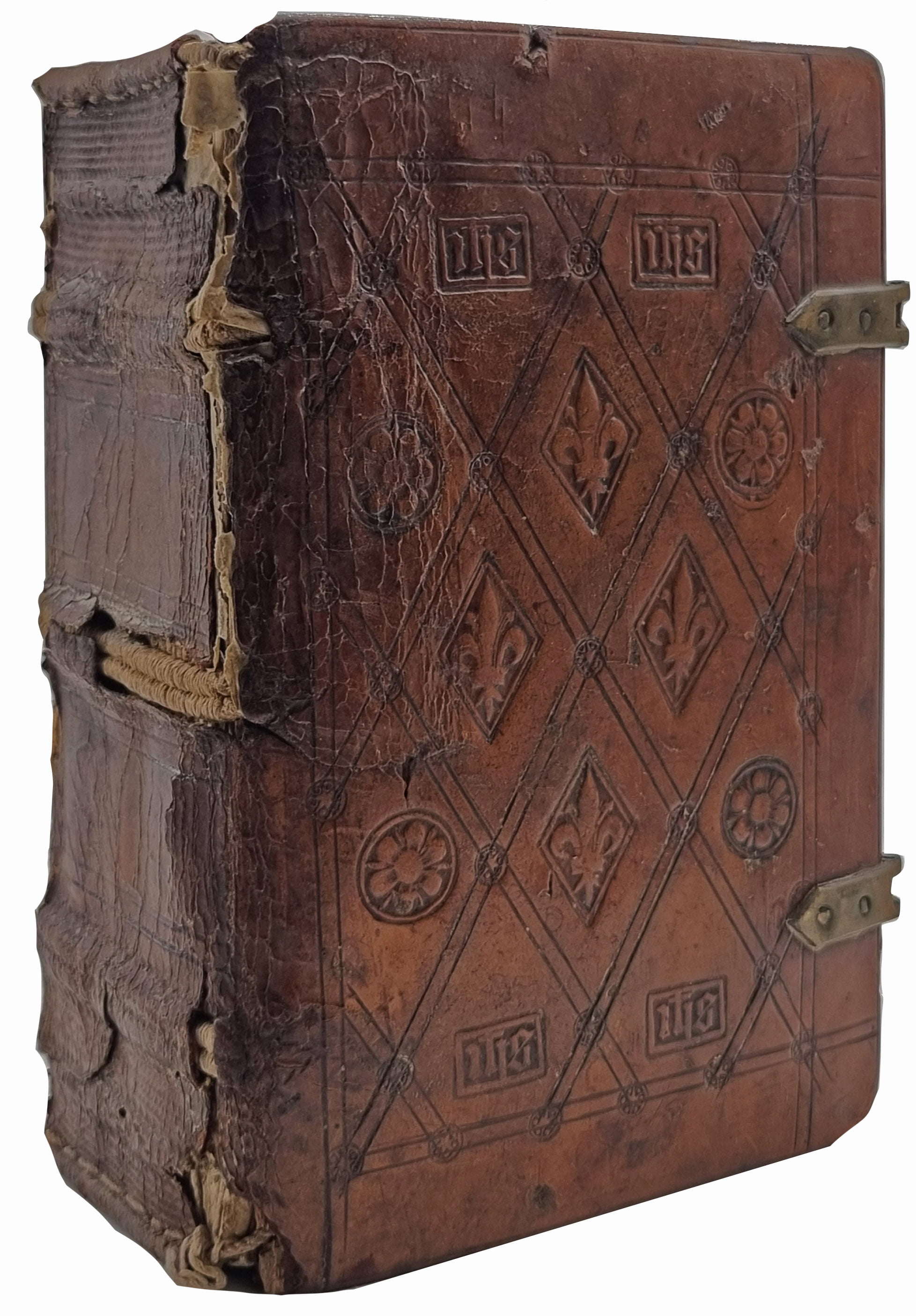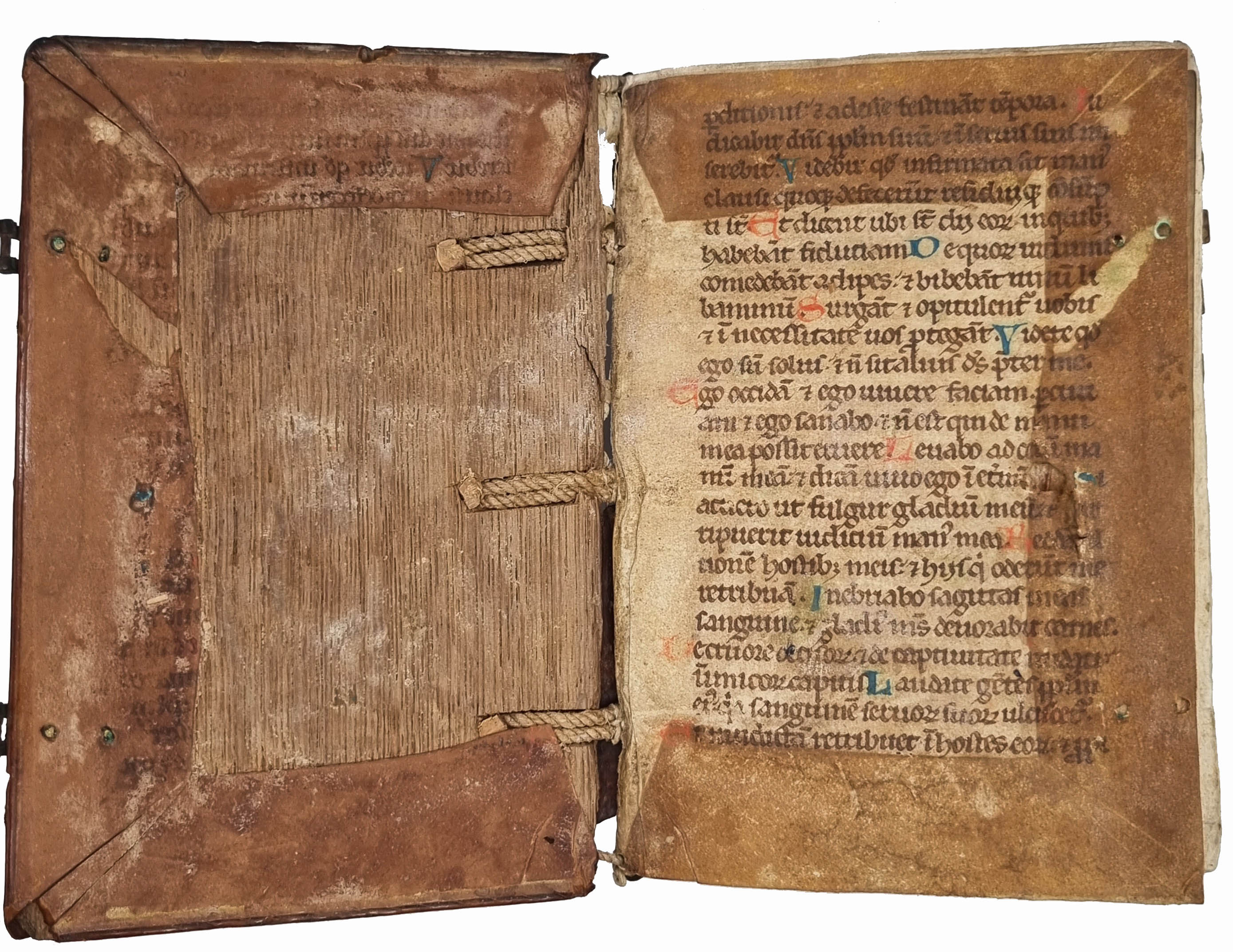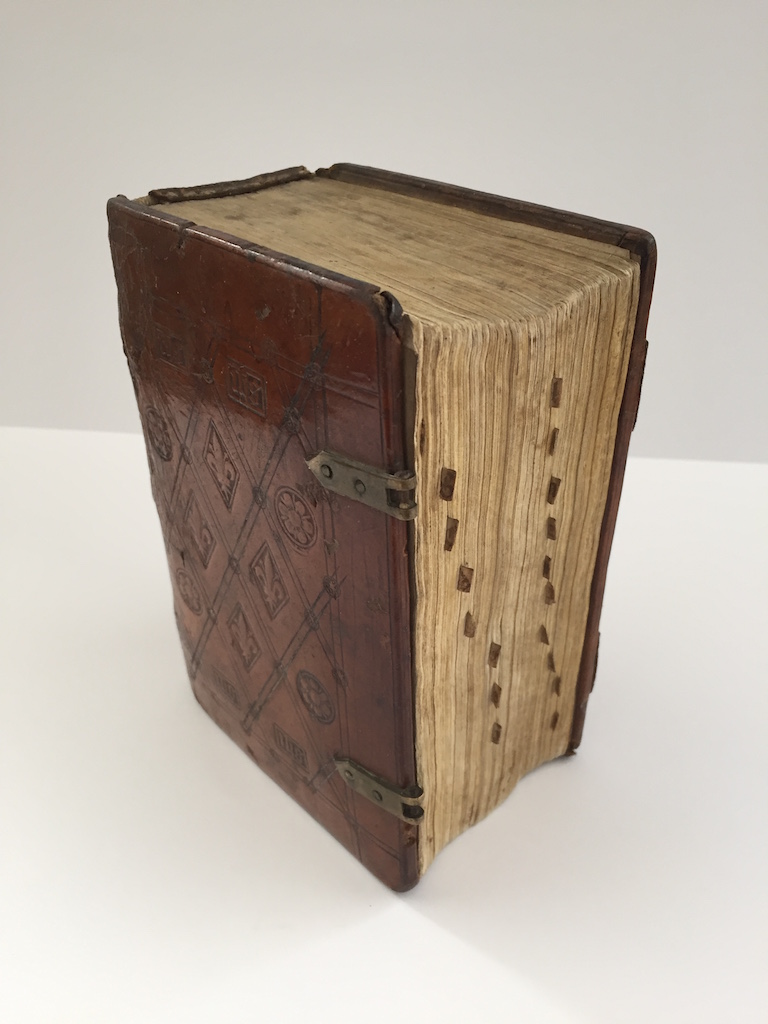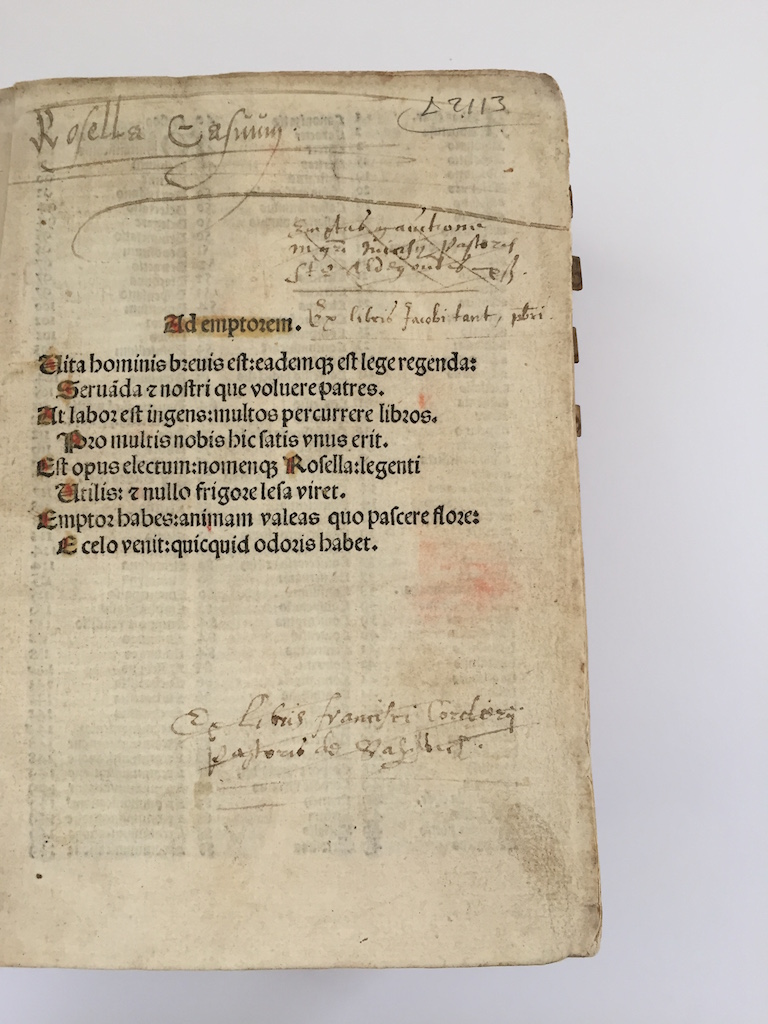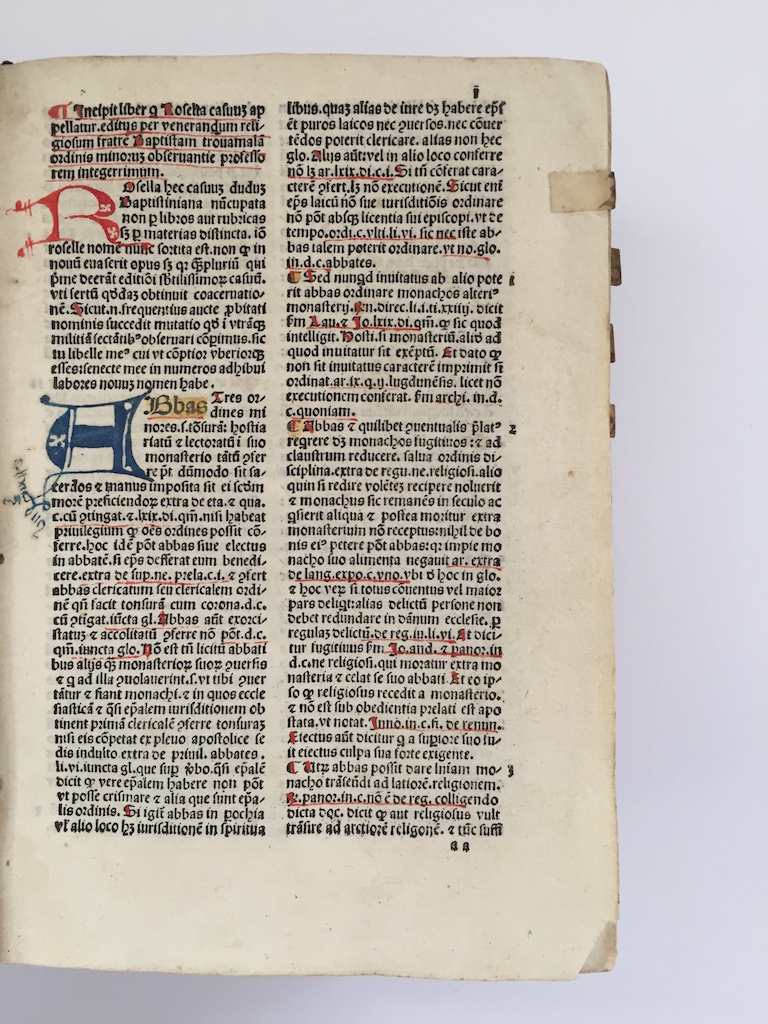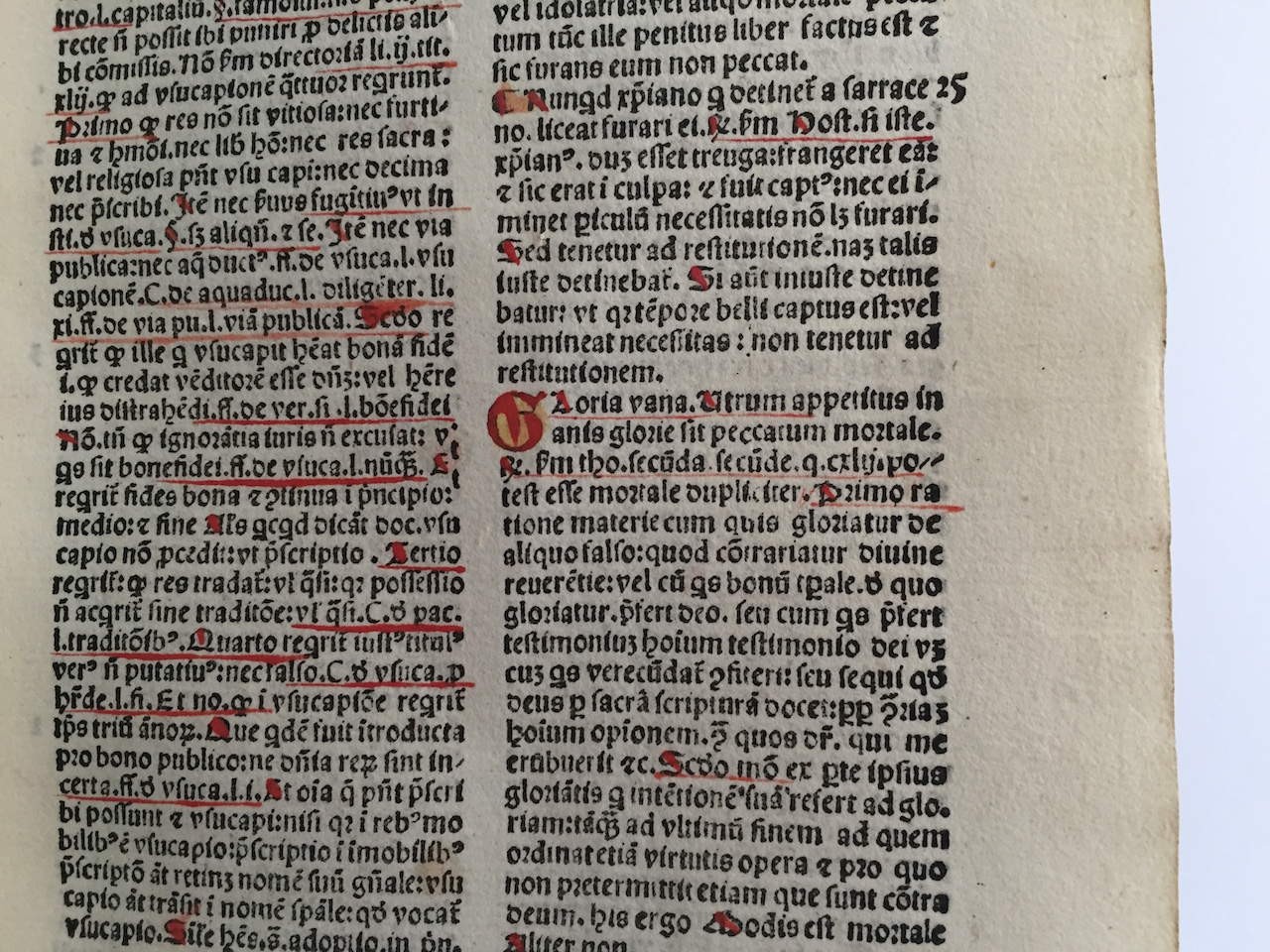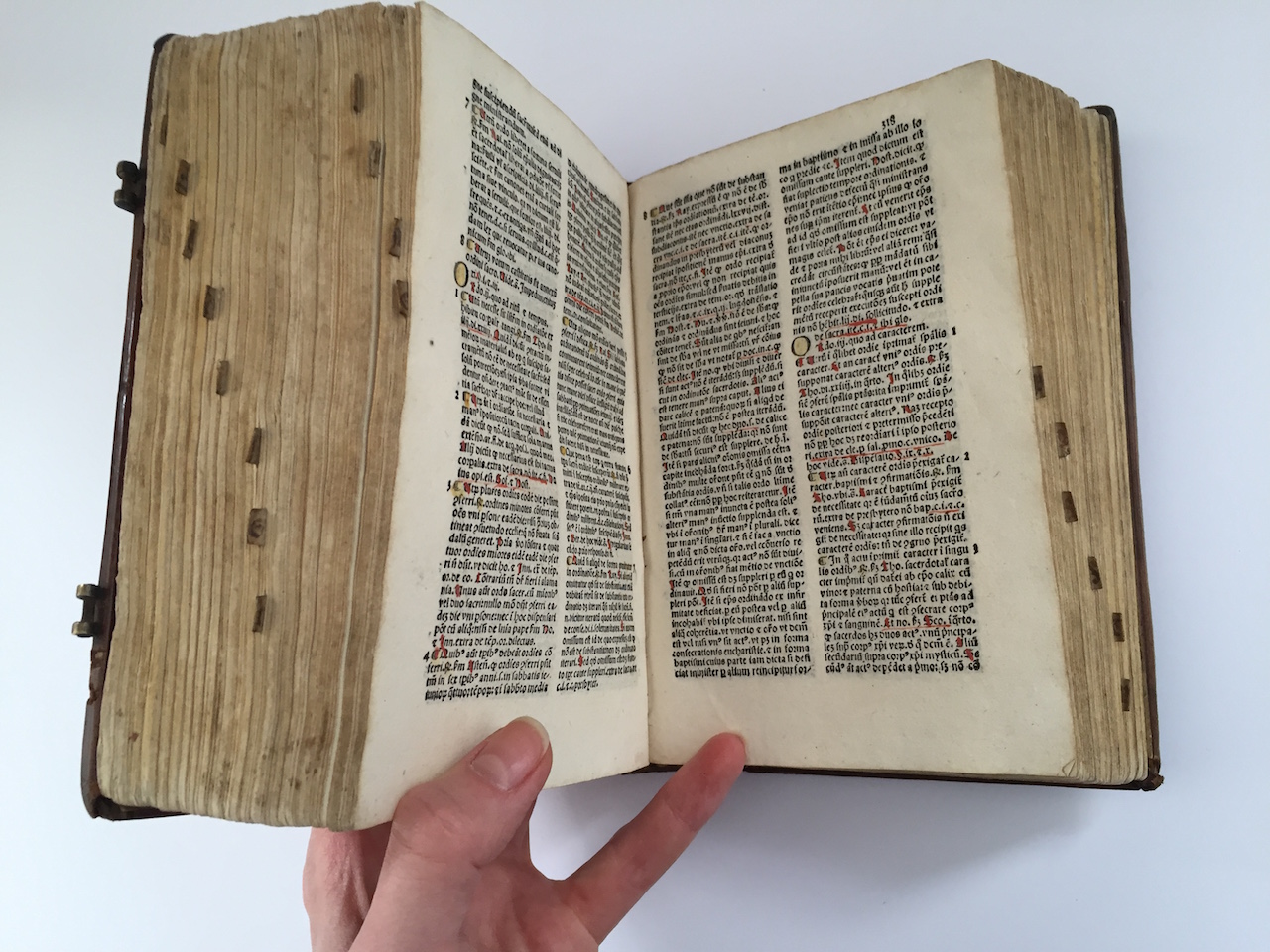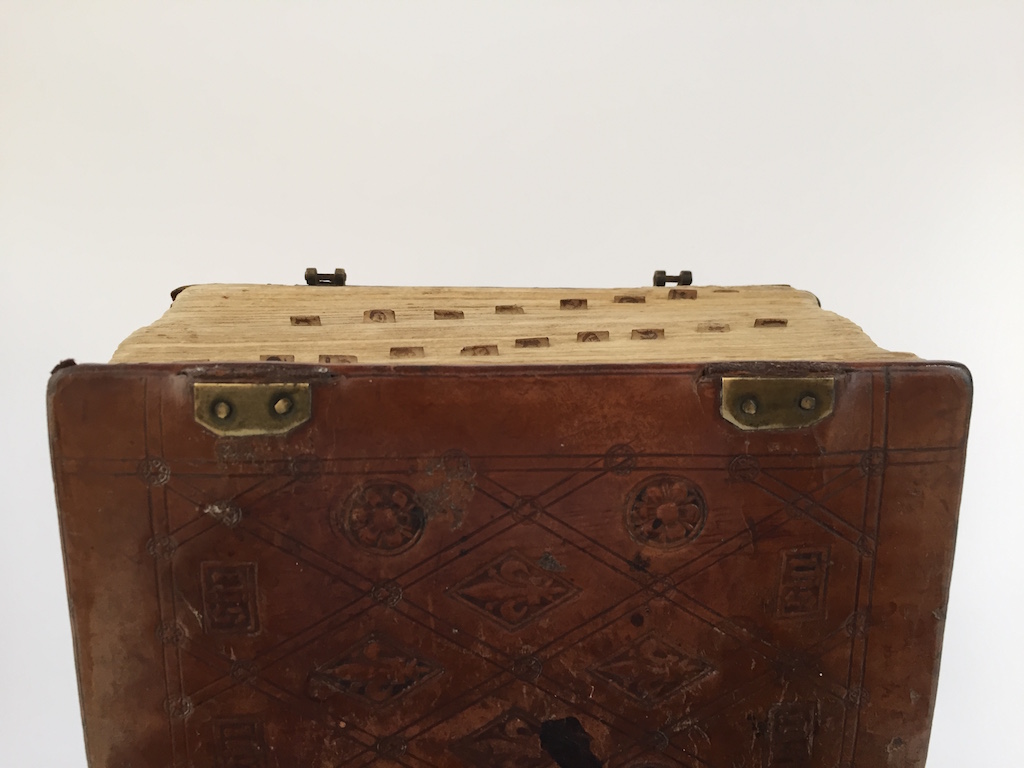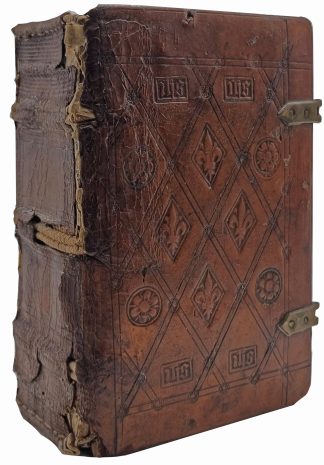TRAVAMALA DE SALIS, Battista
WITH EARLY BOOK AD AND NOTE FROM A 16C AUCTION
Summa casuum conscientiae
Venice, Paganino Paganini, 1499£9,500.00
8vo., ff. (14), 479 (i.e. 476), (+)2, a12, aa-zz12, aa-zz16, &&16, 7716, 4416, AA-CC16, DD12. Gothic letter, double column, 49 lines; edges a bit dust-soiled, occasional small light damp stain to gutter, clean tiny tear to outer lower corner of 17 and 479 (i.e. 476), loosening title. An extremely good copy, unwashed and well-margined, in contemporary Flemish brown calf over wooden boards, blind-tooled with diaper panel with stamps of rose, lily and monogram ‘Ihs’ as well as smaller decorative floral medallions; spine in four compartments, original bronze clasps; slightly scuffed, loss to joints and spine; contemporary red and blue rubrication with touch of yellow, red underlining and manicula throughout; contemporary small vellum labels attached on fore-edge margins marking alphabetical progression; contemporary Flemish purchase note on title and two early C16 [French?] ex-libris of two priests, pastedowns and endpapers from folded manuscript on vellum with Litany of Saints from early C15 Breviary, possibly Flemish, elegantly and neatly rubricated in red and blue, additional later vellum leaf attached after front pastedown with contemporary Dutch manuscript annotation, including initials ‘NKFS’; front pastedown detached from board with minor loss; ex libris 1712 of the library of the Premonstratensian Abbey of Saint-Josse de Dommartin (Pas-de-Calais) on verso of additional vellum leaf, front endpaper verso and final verso.
Charmingly bound, most probably in Flanders, by a German binder, as evidenced by the use of cord for sewing supports. The three cords, laced through holes in the wooden boards, are kept in place by wooden nails, a technique that began to die out in the 1480s. It also bears covered endbands (caps), the leather held in place by secondary sewing.
The early C16 purchase note in this copy states it was ‘emptus in auctione’ (bought at auction) at the sale of the estate of its earliest recorded owner, a Magister Heinsius, priest of the Catholic church of St Aldegondis, probably one of the dozen Flemish churches devoted to her. Aldegonde was a typically Flemish saint; she appears in the early C15 ms. litany of the saints used as fep in this copy, suggesting it was bound and purchased in Flanders. The purchase note refers to a very early sale unrecorded in Dutch Book Sales Catalogue, van Selm and Pollard & Ehrman. Unlike major post-1600 auctions, mostly organized at Leiden or The Hague by the Elzevirs, this probably took place in a sizeable Flemish town; of the earliest (late C15) records of Flemish auctions we possess, all but one concern books owned by church ministers (Hellinga, ‘Four Book Auctions’, 261-69).
The work is prefaced by the poem ‘To the Buyer’. It begins with ‘The life of man is short’, probably too short to read all the books that need to be read. It continues with ‘For us this [book] alone is sufficient instead of many. / This is the chosen book, called Rosella; to the reader / [It is] helpful; and it will not be damaged by the cold. / Buyer, you have a soul you should feed like a flower’. An early form of book advertisement. It belongs to the ‘address to the buyer’ genre, first recorded in Aesop’s ‘Vita et fabulae’ of 1474. Such verse adjusted the traditional authorial valediction to the reader found in mss (‘go, little book’) to the newer practice of single sheets or appendixes marketing individual books or stock lists to potential buyers (e.g., Hellinga, ‘Sale Advertisements’, 2; Pollard & Ehrman, ‘The Distribution’, 1-6).
Early and second octavo edition of this famous manual for confessors, first published in Novi Ligure in 1484 and expanded by the author four years later. Battista Travamala, died 1496, was a Franciscan friar from Salo, in Liguria, from which he took the alternative name de Salis. His most influential work was this ‘Summa casuum’, also known as ‘Summa Baptistiana’, ‘Rosella casuum’ or ‘Summa Rosella’, completed in 1483 in the convent of Levanto. It had immediate success.
Following the deliberations of the Fourth Lateran Council in 1215, a large number of manuals on penance appeared, to enhance priests’ intellectual preparation and instruct them on how to be prudent confessors. These handbooks discuss in detail the foundation of moral theology, presenting as questions (casus) numerous examples of correct application of canon law. This Summa adopted the alphabetical order of topics, in line with Bartholomeus de San Concordio, author of an earlier Summa. Relying on this and previous literature, Trovamala independently developed some important legal principles, such as those regarding invalidity of marriage where spouses were only pretending to live together.
This edition also provides a rare early example of pocket-size octavo pertaining neither to devotion or (as developed by Aldus two years later) classic literature. As the three owners’ inscriptions on title point out, this genre of books was meant to be used by clerics at any time in their daily work and thus needed to be easily transportable. One of the priests using this very remarkable copy even marked the beginning of alphabetical sections to recover information more quickly.
ISTC, is00050000; BMC, V, 460; GW, 3326 (+ Accurti, II, 70); Goff, S-50; Hain, 14186; Graesse, VI, 233. L. Hellinga, ‘Sale Advertisements for Books Printed in the 15th Century’, in Books for Sale, ed. R. Myers et al. (London, 2009), 1-25; G. Pollard and A. Ehrman, The Distribution of Books by Catalogue (Cambridge, 1965); B. van Selm, ‘A List of Dutch Book Auction Sale Catalogues Printed Before 1611’, Quaerendo 12 (1982), 95-129, and ‘The Introduction of the Printed Book Auction Catalogue’, 15 (1985), 115-49; L. Hellinga, ‘Four Book Auctions of the 15th Century’, in The Medieval Book, ed. J.H. Marrow et al. (’t-Goy-Houten, 2010), 261-69.In stock


